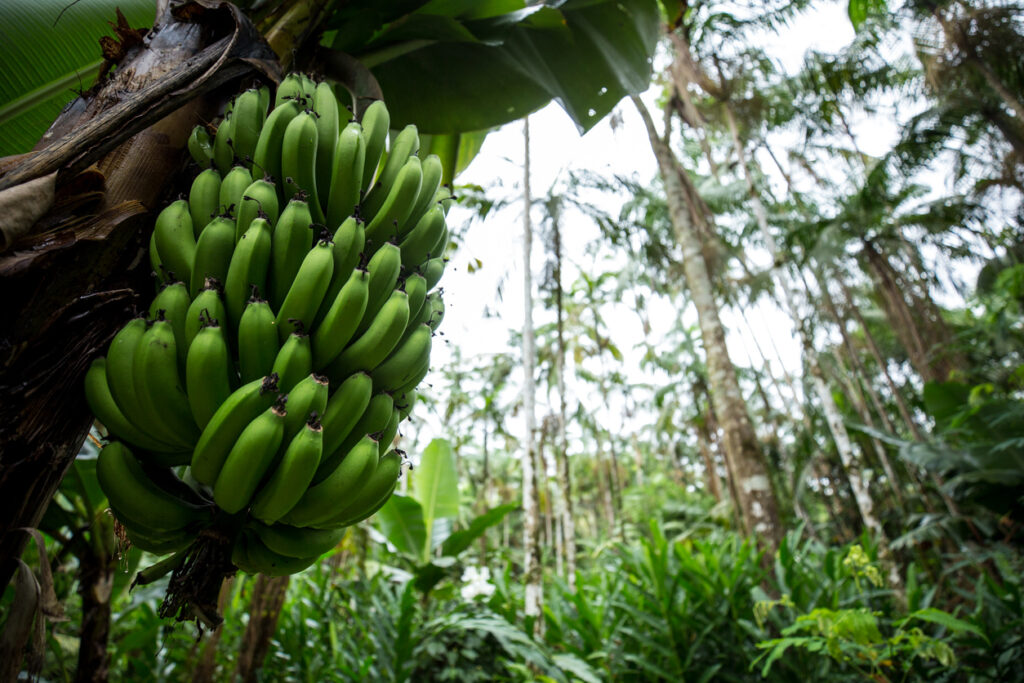
What is agroforestry?
Agroforestry might sound like a niche term from a textbook, but at its core, it’s a simple, practical idea: growing trees and crops together in the same space. Instead of keeping agriculture and forestry separate—as we often do with sprawling fields on one side and thick woodland on the other—agroforestry blends them in a way that benefits both nature and people.
It’s not just about planting a few trees on a farm for decoration. Agroforestry is a deliberate system where trees, shrubs, and plants are grown alongside crops or livestock to support the land in multiple ways. It’s rooted in traditional land practices that have been around for centuries, but it’s also being championed today as a more sustainable way to farm, manage land, and protect the environment.
Why mix trees and farming?
Because trees are multitaskers. They stabilise the soil, provide shade, attract pollinators, and help store carbon. When you introduce them into agricultural land, you’re not just planting something pretty—you’re creating a more resilient ecosystem. The trees help hold moisture in the soil, reduce erosion, and provide shelter for animals, insects, and even the crops themselves.
It also means farmers aren’t putting all their eggs in one basket. They might grow vegetables while also harvesting fruit, nuts, timber, or even medicinal plants from their trees. In some systems, trees feed livestock by dropping leaves or fruit that animals can graze on. It’s all about using space more wisely and letting different elements support one another.
What does agroforestry look like in practice?
It depends on the region and the goals of the people using it. In some areas, agroforestry might mean rows of fruit or nut trees interspersed with fields of grain or vegetables. In others, it could be silvopasture—a system where trees are grown alongside grazing livestock, creating a shaded, more natural environment for animals.
There’s also alley cropping, where crops are grown between rows of trees or shrubs, or forest farming, where shade-loving crops like mushrooms or herbs grow under a tree canopy. It can be tailored to the land, the climate, and the needs of the community. That flexibility is one of its biggest strengths.
How does it help the planet?
Agroforestry supports biodiversity by creating a more varied environment. Monoculture farming—growing just one crop over a huge area—tends to drain the soil and leave little room for wildlife. Agroforestry, on the other hand, creates space for birds, insects, and other animals to thrive. That kind of diversity helps control pests naturally and encourages healthier pollination.
It also tackles climate issues head-on. Trees store carbon, which helps reduce the amount of CO₂ in the atmosphere. They protect soil from being blown or washed away during storms. And because the system mimics natural ecosystems more closely than conventional farming, it’s more adaptable to extreme weather—something that’s becoming more important every year.
Is agroforestry happening in the UK?
Yes—and interest is growing. While it’s been practiced more widely in parts of Africa, Asia, and Latin America for generations, the UK is starting to catch on. Projects in Wales, Scotland, and across England are showing how agroforestry can work on small farms, estates, and even urban fringes. Some farmers are planting hedgerows and shelterbelts to protect crops from wind, while others are experimenting with nut trees or rewilding parts of their land.
Government schemes are slowly beginning to support these efforts, recognising the value of agroforestry in improving soil health, encouraging wildlife, and helping the UK meet its environmental goals. There’s still a long way to go, but the momentum is building.
Why does it matter?
Agroforestry matters because it offers a hopeful, practical alternative to extractive farming systems that take more than they give. It reminds us that land can be productive and protective at the same time—that we don’t have to choose between growing food and supporting nature.
In a world facing climate pressure, biodiversity loss, and growing food insecurity, systems like agroforestry show us that the solutions don’t have to be flashy or futuristic. Sometimes, they’re already growing in the soil—we just have to plant them in the right way.